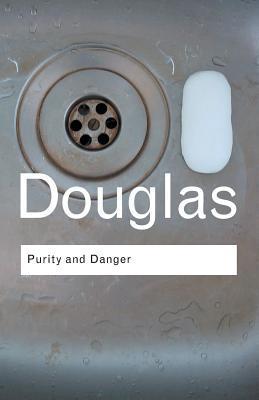What do you think?
Rate this book


244 pages, Paperback
First published January 1, 1966
[I}n general the underlying principle of cleanness in animals is that they shall conform fully to their class. Those species are unclean which are imperfect members of their class, or whose class itself confounds the general scheme of the world. (55)
[D]irt is essentially disorder. There is no such thing as absolute dirt: it exists in the eye of the beholder. If we shun dirt, it is not because of craven fear, still less dread or holy terror. Nor do our ideas about disease account for the range of our behaviour in cleaning or avoiding dirt. Dirt offends against order. [...] For I believe that ideas about separating, purifying, demarcating and punishing transgressions have as their main function to impose system on an inherently untidy experience. (2 - 4)
Granted that disorder spoils pattern; it also provides the materials of pattern. Order implies restriction; from all possible materials, a limited selection has been made and from all possible relations a limited set has been used. So disorder by implication is unlimited, no pattern has been realised in it, but its potential for patterning is infinite. This is why, though we seek to create order, we do not simply condemn disorder. We recognise that it is destructive to existing patterns; also that it has potentiality. It symbolises both power and danger. (94)
Danger lies in transitional states, simply because transition is neither one state nor the next, it is undefinable. The person who must pass from one to another is himself in danger and emanates danger to others. The danger is controlled by ritual which precisely separates him from his old status, segregates him for a time and then publicly declares his entry into his new status. [...] To behave anti-socially is the proper expression of [the Maori boys'] marginal condition. To have been in the margins is to have been in contact with danger, to have been at a source of power. (96-97)
[The witchcraft] may lie dormant as they live their life peacefully in the corner of the sub-system in which they are intruders. But this role is in practice difficult to play coolly. If anything goes wrong, if they feel resentment or grief, then their double loyalties and their ambiguous status in the structure where they are concerned makes them appear as a danger to those belonging fully in it. It is the existence of an angry person in an interstitial position which is dangerous, and this has nothing to do with the particular intentions of the person. (102, emphasis mine)
Of course, the yearning for rigidity is in us all. It is part of our human condition to long for hard lines and clear concepts. When we have them we have to either face the fact that some realities elude them, or else blind ourselves to the inadequacy of the concepts.
╠²╠²╠²╠²╠²╠²The final paradox of the search for purity is that it is an attempt to force experience into logical categories of non-contradiction. But experience is not amenable and those who make the attempt find themselves led into contradiction. (162)
When we honestly reflect on our busy scrubbings and cleanings in this light we know that we are not mainly trying to avoid disease. We are separating, placing boundaries, making visible statements about the home that we are intending to create out of the material house. If we keep the bathroom cleaning materials away from the kitchen cleaning materials and send the men to the downstairs lavatory and the women upstairs, we are essentially doing the same thing as the Bushman wife when she arrives at a new camp. She chooses where she will place her fire and then sticks a rod in the ground. This orientates the fire and gives it a right and left side. Thus the home is divided between male and female quarters.Also she thinks money is a ritual; not really sure I understand why. I think that secular/rationalist societies are still in an ongoing process of analysing and discarding rituals, but possibly also discovering that they miss them and need some new ones?